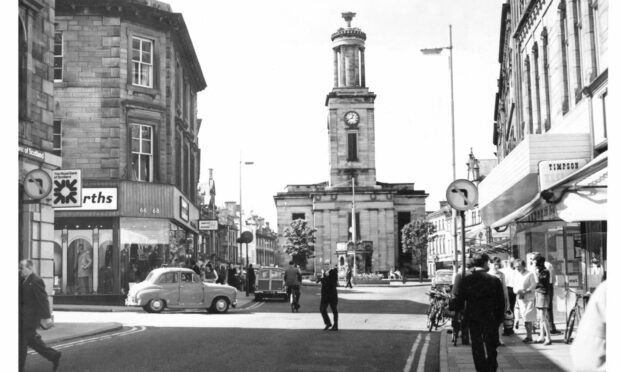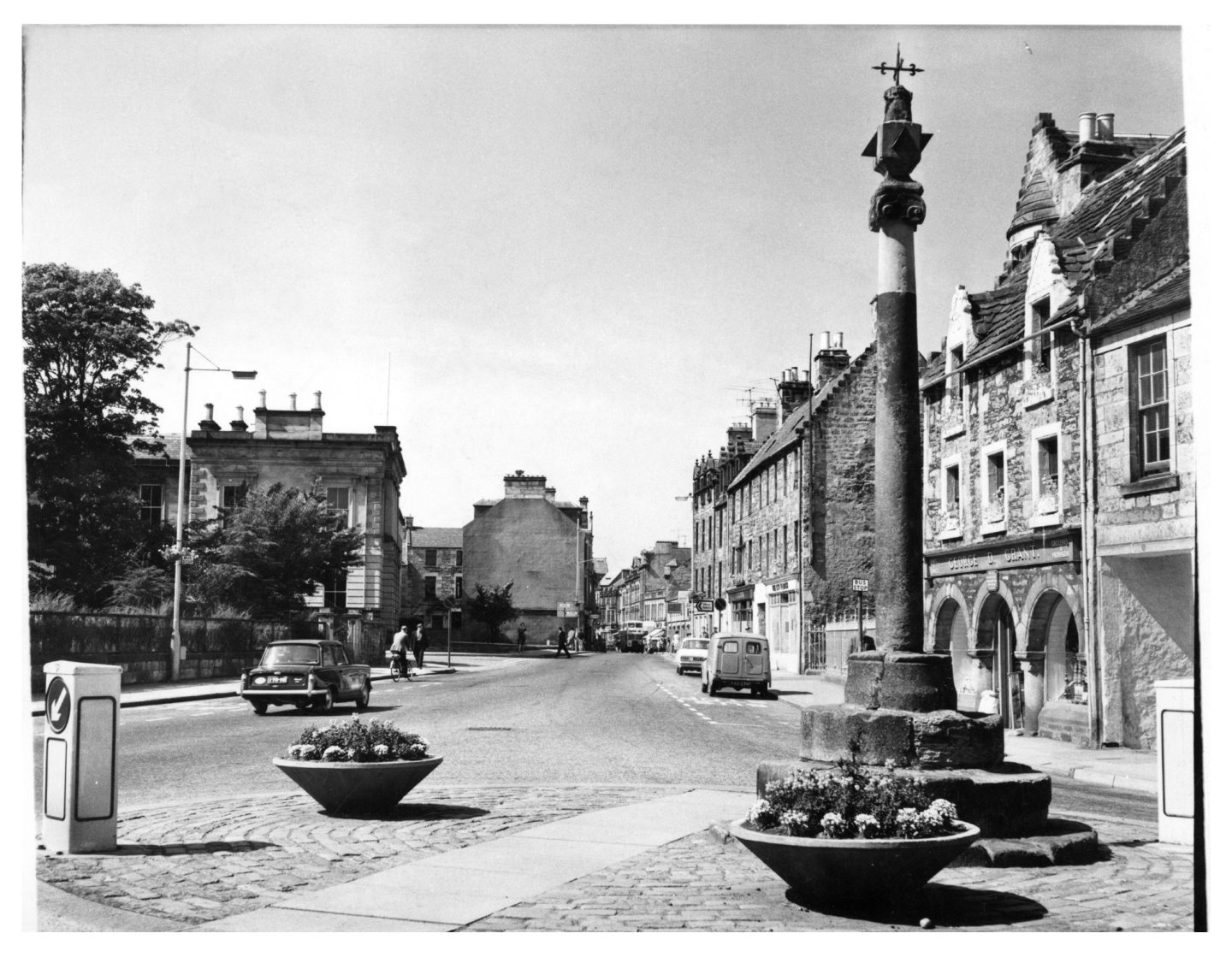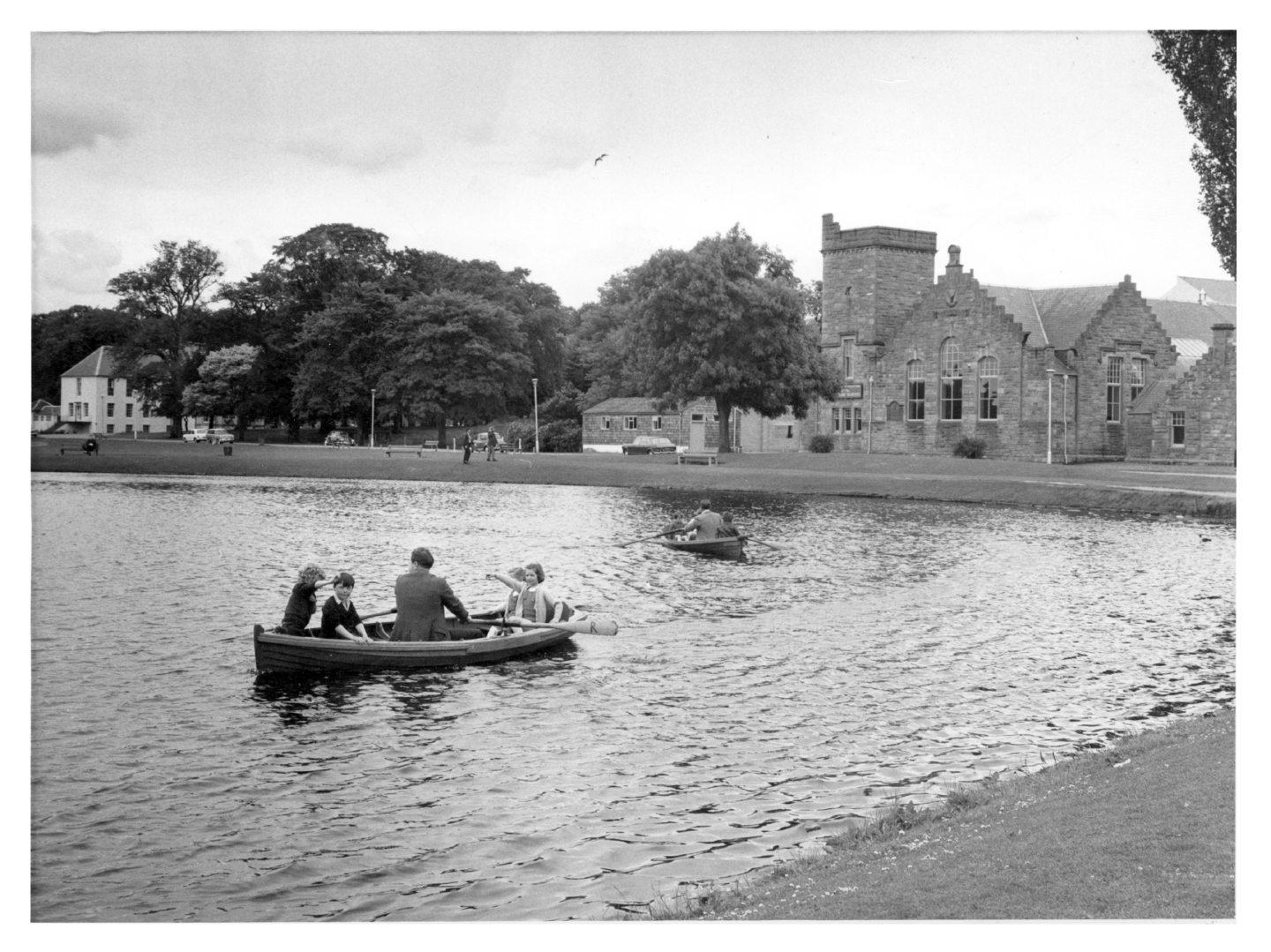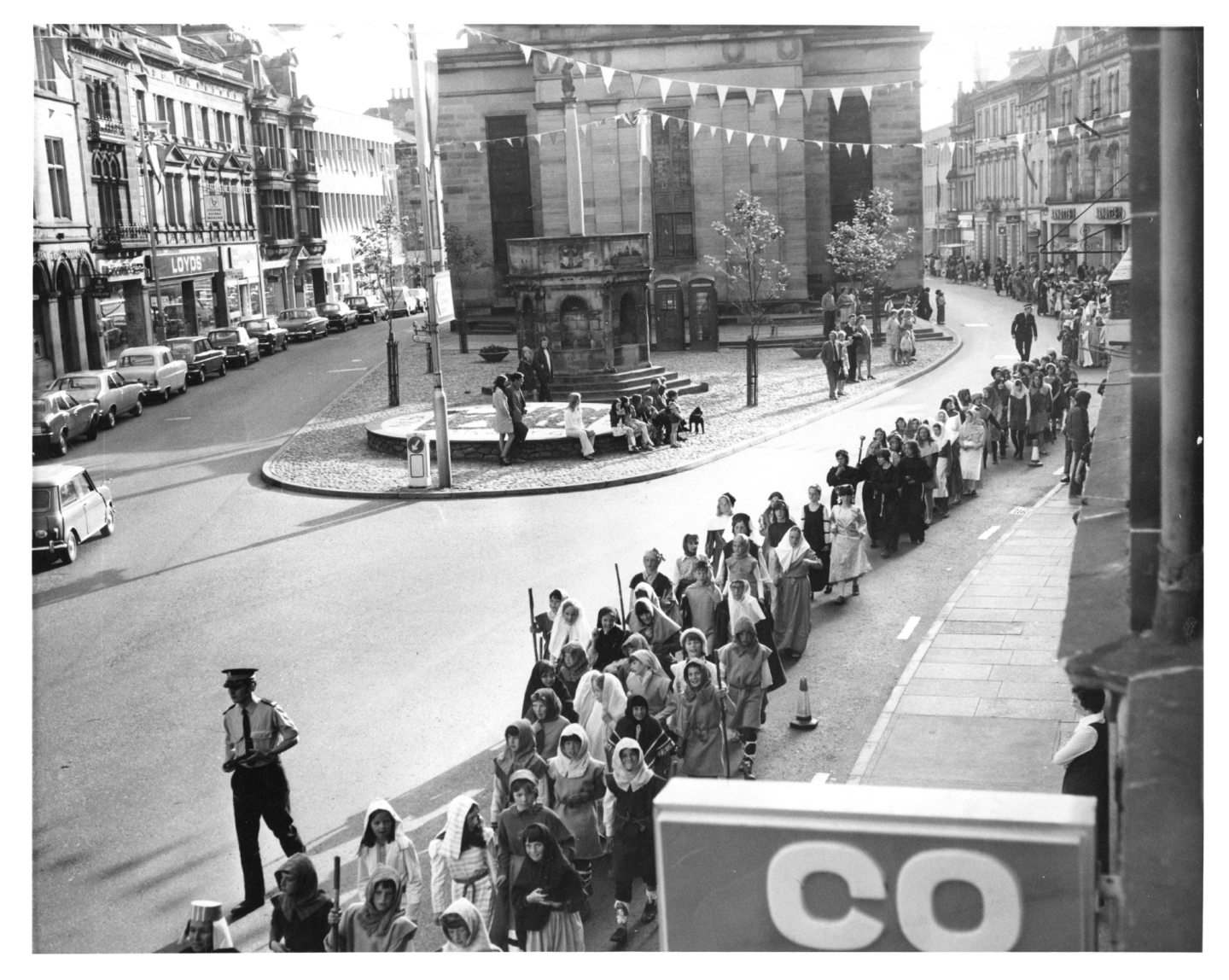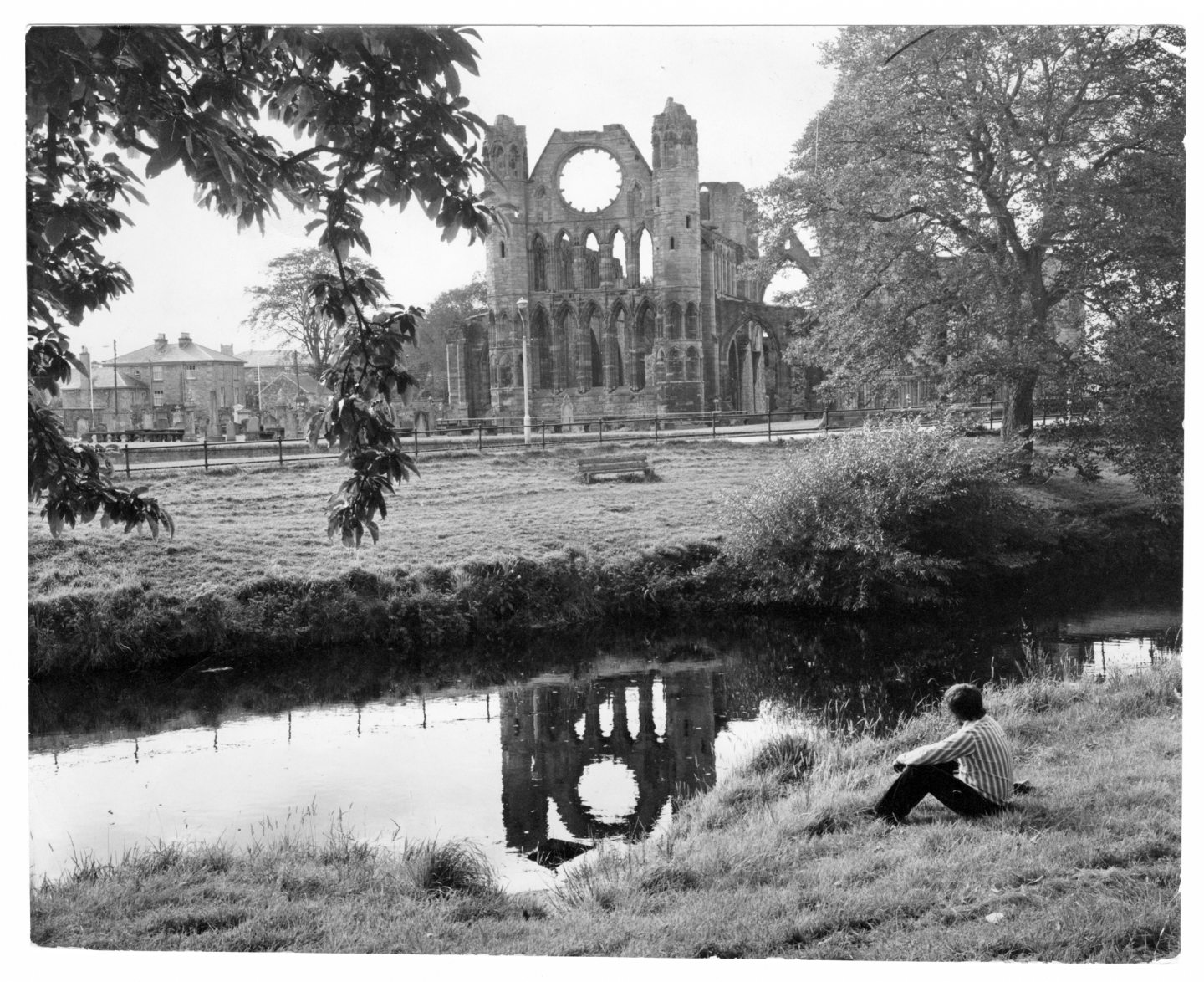An ancient settlement with medieval roots, Elgin was lauded in Victorian times as “one of the most picturesque towns in Scotland”.
With its spectacular ruined cathedral, classic architecture and pleasant location near the River Lossie, it’s easy to see why the Victorians were fond of Elgin.
In 1903, Cooper Park was gifted to the citizens of Elgin, but it was a century that saw a lot of change in the town.
Elgin was said to be at an “industrial crossroads” in the late 1960s, with a focus on new industries and employment to future-proof the town.
However, the news that the RAF was to take over the Fleet Air Arm base at Lossiemouth in 1972 saw an upturn in Elgin’s fortunes.
More people in the region meant prosperity for town centre traders, and the town attracted crowds of shoppers from across Moray.
At the time, modernisation of Elgin’s town centre buildings and the demolition of others was celebrated as progress.
These days, we perhaps don’t look back so fondly on the demolition of buildings like the old Assembly Rooms to make way for shopping developments.
Join us for a look back through the archives at Elgin’s bustling town centre in days gone by.
1961: The Queen at the County Buildings
The magnificent County Hall on Elgin’s High Street was the backdrop for a royal visit in August 1961.
These days, the imposing building is the headquarters for Moray Council.
The Queen and Duke of Edinburgh received a warm welcome in Elgin as part of their tour of Moray.

It was three cheers for her Majesty as she left Elgin Town Hall in 1961. Image: DC ThomsonElgin City Band and crowds of well-wishers greeted the Queen outside the County Hall before she went inside for lunch.
However, there was some criticism that High Street was too narrow to suitably accommodate crowds of locals who wanted to glimpse the Queen.
It was argued that Cooper Park would have been a more inclusive venue.
1969: Little Cross, High Street
Originally a boundary marker for the cathedral, the Little Cross is a familiar totem at the top of High Street.
The original cross dated back to 1402AD, but the current column was erected in 1733.
The Little Cross has been a steadfast feature in Elgin, which has borne witness to the changing streetscape in decades past.
The historic buildings on the right-hand side are virtually the same today, but the view on the left is very different.
Where Moray Council’s building stands now, used to be the mansion, Dunfermline House, and its grounds.
The building went to ruin, and although there were plans to develop the site as a hotel in the 1970s, they never materialised.
1971: Boating at Cooper Park
There was much to celebrate in Elgin in 1902, when it was announced that Colonel George Cooper was to gift a mansion and grounds to the town.
The generous 40 acres of estate policies with historic trees was to become a public recreation ground.
While Mr Cooper wanted the mansion – Grant Lodge – to be a library, reading room and museum.
Mr Cooper engaged Aberdeen architect Alexander Marshall Mackenzie to draw up plans for the new park, and paid for all the work himself.
The park opened in 1903, with the additional of a skating pond, bandstand, cricket pavilion and bowling green.
Mr Cooper said he hoped people would “enjoy themselves, see the grass growing and the green leaves, and be all the better for it”.
1974: 750 years of Elgin Cathedral
Hundreds of schoolchildren paraded through Elgin in colourful 16th Century attire to celebrate the 750th anniversary of Elgin Cathedral in 1974.
A historic pageant took place in the grounds of Elgin Cathedral with performers telling the story of the cathedral’s rich history.
The ambitious celebrations also included a lavish medieval-style banquet at the town hall.
The food on offer also reflected that of the 16th Century: boar’s head pate and trout was dished up alongside wine and mead.
1974: Reflections of Elgin Cathedral
Known as the ‘lantern of the north’, Elgin Cathedral has an enduring beauty, despite its ruinous form.
Built in 1224, the cathedral takes the shape of a cross on the banks of the River Lossie and retains much of its medieval architecture.
In its day, it was the spiritual heart of the diocese of Moray before being abandoned during the Protestant Reformation in 1560.
The religious revolution split the church across Scotland, and the Elgin Cathedral congregation moved to St Giles instead.
Over the years, Elgin Cathedral slowly fell into disrepair; its roof was stripped, its bells removed and eventually the central tower collapsed.
Moves to preserve the structure were made in the 1800s, when local man John Shanks took on a caretaking role of the structure.
1978: South Street
South Street was a busy shopping thoroughfare in 1978, and remains at the retail heart of Elgin today.
Elgin enjoyed economic buoyancy in the 1970s thanks to nearby RAF Lossiemouth, but also through employment opportunities at new businesses on the Pinefield Estate.
Work on a new relief road through Elgin aimed to make the town centre a more pleasant place to shop, with fewer cars on the road.
The name AE Dawson, on the right, remains synonymous with South Street, with the opticians still occupying large corner premises.
The units on the left are now a barber and tattoo shop, while the small building on the right has been demolished completely.
Despite recent challenges like Covid and the cost-of-living crisis, South Street remains home to many independent business.
